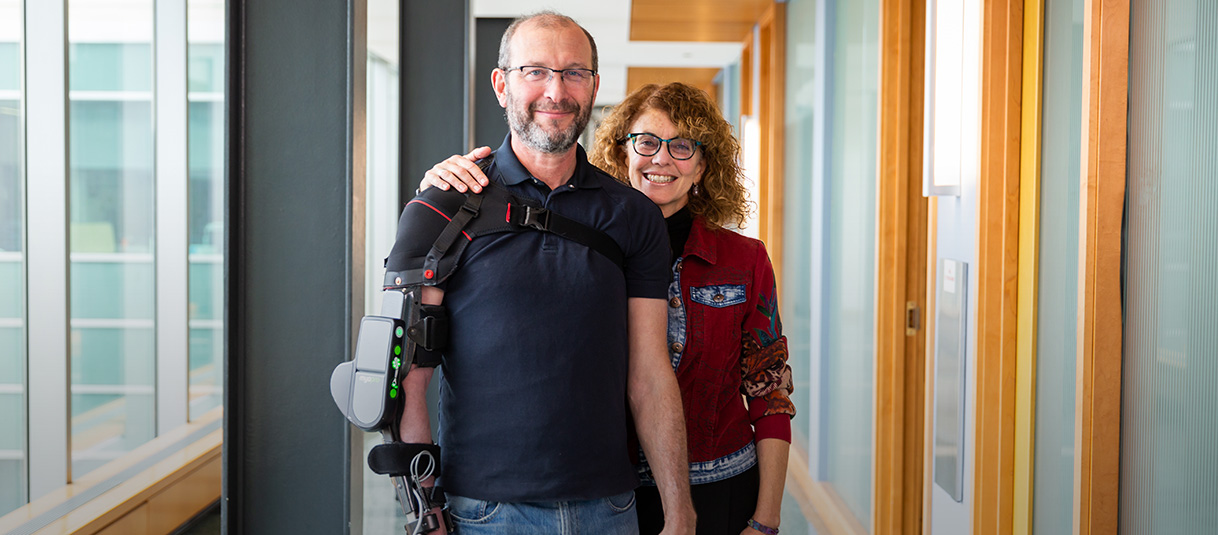BY JULIANNE HILL // view article PDF
In his office in Northwestern's Silverman Hall overlooking Lake Michigan, Igal Szleifer uses his left hand to fasten a black cloth harness across his blue polo shirt, then clips a robotic device called MyoPro around his forearm and fingers of his right arm. His wife, Ingrid, looks on.
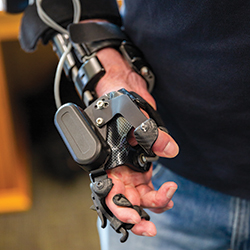
A 12-year veteran of Northwestern Engineering’s faculty, Szleifer worked with undergraduates in Biomedical Engineering Capstone Design to develop a quantitative method to measure the effectiveness of this battery-powered hand- and arm-brace designed for people who have had strokes or spinal cord injuries.
It’s important business. Such measurement is necessary for MyoPro to become reimbursable by Medicare, Medicaid, and insurance companies and key to its marketability.
But it’s also tricky. Though nearly 3 million people in the US suffer from upper extremity paralysis, finding patients who are not only willing to test the upper-limb orthosis early in their recovery, but also able to articulate constructive feedback, can be difficult.
Unlike his other lab work focused on theoretical chemistry and modeling, the Christina Enroth-Cugell Professor of Biomedical Engineering’s role in evaluating the robotic orthosis was a very practical task.
Szleifer himself is a user of MyoPro.
“Igal is particularly insightful in general,” says Matt Glucksberg, professor of biomedical engineering at the McCormick School of Engineering, who served as the students’ adviser, “and just as much as ever after his stroke.”
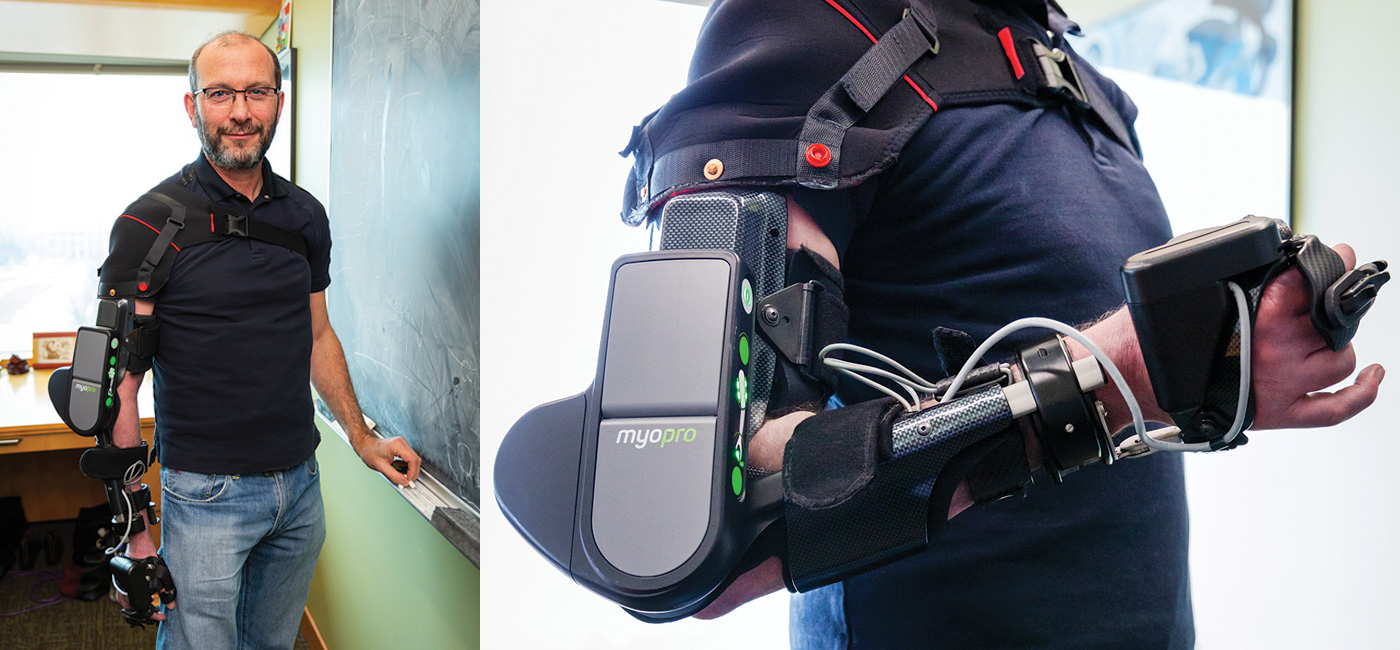
Disciplined and Determined
In October 2015, one of the two carotid arteries that supply blood to the brain tore, paralyzing the right side of Szleifer’s body. Doctors told him he’d never walk again, and that severe aphasia had stolen all three languages he spoke.
“He is incredibly disciplined. He’s very determined to continue toward recovery,” says Glucksberg. “He has kept at it, even if the progress comes slowly.”
Early in his recovery, Szleifer joined the Shirley Ryan AbilityLab’s Intensive Comprehensive Aphasia Program, addressing his language impairment. More than four years after his stroke, he still attends occupational therapy several times a week.
In mid-2016, Szleifer returned to Northwestern Engineering. Whether working at the lab or now from home, Ingrid, his wife of 35 years, is a constant presence, patiently waiting to assist—but only when necessary, allowing space for his independence to grow.
Regaining physical movement takes time, with progress measured in millimeters. While intensive physical and occupational therapy helped him regain the ability to walk, his right hand and arm hang limp, capable only of very limited motion.
Northwestern Connection
In 2018, alumnus Paul R. Gudonis (’76), chief executive officer of Myomo, the Cambridge, Massachusetts-based company that developed MyoPro, approached Eric Perreault, chair of biomedical engineering, about potential student projects involving the new orthosis.
Ultimately, that resulted in the team of four Northwestern Engineering undergraduates designing ways to measure quantifiable functional outcomes for MyoPro. Szleifer enrolled as a user.
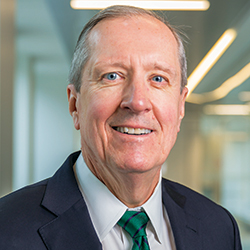
“After a stroke or other neurological event, the nerve signals that tell muscles to move are faint—often less than 1 percent of a typical signal level,” says Gudonis, a member of the McCormick Advisory Council. He is one of several Northwestern alumni on MyoPro’s leadership team.
With MyoPro, noninvasive sensors placed on the forearm and bicep work to detect the patients’ own neurological signals and sense their intent to move. Using myoelectric technology, those brain waves then activate small motors to assist the paralyzed limb as the user wants—without electrical stimulation. While using the device, users completely control their own hands, wrists, elbows, and arms.
For their capstone design project, the undergraduate team interacted directly with Myomo engineers. After two quarters of work, the students developed a set of functional two-handed tasks used in daily life—for example, holding a cucumber with the impaired hand while slicing with the unaffected hand—as the best ways to show how MyoPro enhances improvement, immediately and over time.
For the study, Szleifer tried out the MyoPro for a few hours. “It wasn’t much time at all, but enough to realize that it would be good for me to use it on my own,” Szleifer says.
Ingrid adds, “It exercises his brain and his hand and arm at the same time. It can be exhausting, but he works very hard on this.
“He is a beast.”
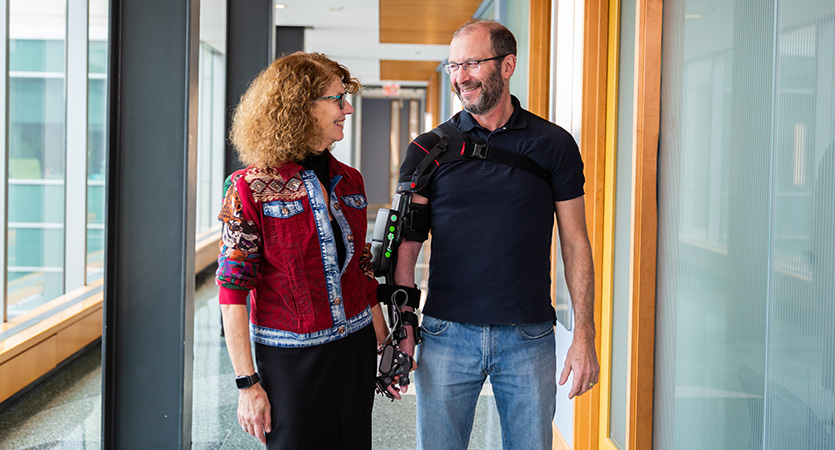
Regaining Independence
In his office, as he wears the four-pound device, Szleifer bends his elbow, wrist, and fingers with the mechanical support. He looks up, smiles broadly, and raises his eyebrows with glee.
“He has tried many devices. Nothing else has worked,” Ingrid says. “This has offered so much more improvement in a much shorter timeframe. This is fabulous.”
In addition, a proprietary computer program communicates wirelessly with the device, allowing users and their therapists to check progress and set new goals for physical and occupational therapy.
“His improvement is very motivating,” Ingrid says. “He wouldn’t do it if he didn’t see results.”
Months after the study, Szleifer continues to wear MyoPro about an hour or two each day. That commitment continues to pay off—even once he takes off the device.
“Repetitive use of the device encourages the regeneration of neuronal pathways, just like occupational therapy works with patients to get them to initiate movement,” Gudonis says.
After removing the device and the harness by himself, Szleifer shows off the mobility in his right hand and arm. He touches his left shoulder, then his left hip, without the aid of MyoPro.
He beams, moving his right hand to touch his forehead.
“MyoPro is wonderful because I have this motion again,” he says. “This is perfect.”

